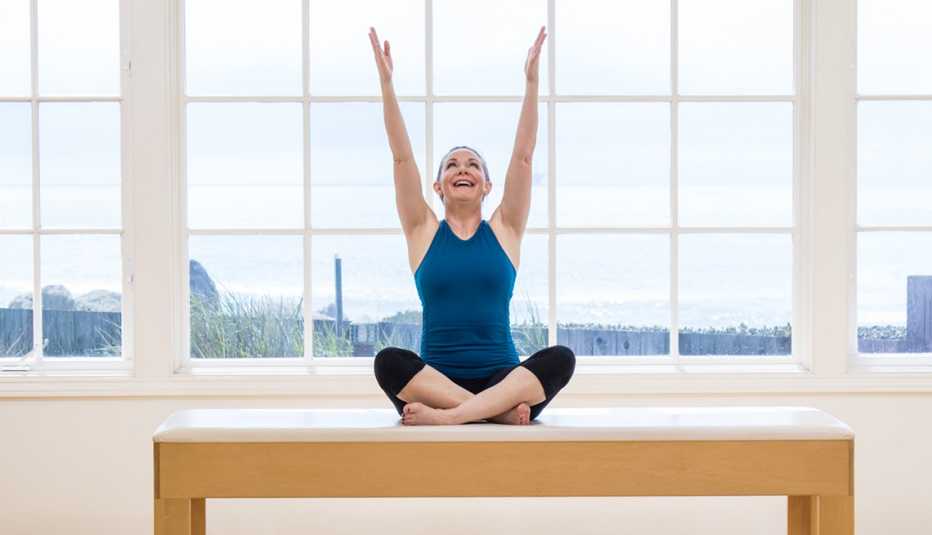AARP Hearing Center


If you’re looking for a gentle way to recover from an injury or want to find a way to strengthen your entire body, Pilates might be your ticket to transformation.
Free On-Demand Classes from Pilates Anytime
AARP Members Only Access offers a range of free videos from Pilates Anytime instructors. Please consult your physician before beginning any exercise program.
“Pilates is to help you do other things better, not necessarily your only thing. You want to use Pilates to help improve other areas of your life. If you like to hike, you want to have good balance, or if you want to be able to have endurance,” says Gia Calhoun, vice president, content director and instructor at Pilates Anytime, an online streaming platform.
While Pilates shouldn’t completely replace other forms of exercise, such as weight lifting or cardio, or aerobic activities like jogging, biking or walking, Calhoun adds that it improves your ability to do those movements by helping you discover the smaller muscles you need to do other activities. “It’s great for people who are walkers or runners because then it kind of stabilizes and strengthens the rest of your body, so walking and running becomes easier,” Calhoun says.
Pilates has been around since at least 1920, when Joseph and Clara Pilates emigrated from Germany and opened the Body Conditioning Gym in New York City. They taught “contrology,” which was renamed Pilates after Joseph’s death. Today, Pilates’ principles focus on concentration, centering, control, precision, flow and breathing.
Calhoun notes that contrology, or the art of control, helps to align multiple aspects at the same time. “You are controlling your body, your mind and your spirit, and kind of bringing everything together. It uses resistance to create streamlined movement patterns and it’s really good for anybody — there’s no impact on your joints,” she says. “It’s very safe and effective.”
If you’ve ever practiced Pilates or watched a class, you may have noticed there aren’t aerobic movements or weight training, but rather small, controlled movements done on a mat, in a standing position or in a chair. It often uses your own body weight as resistance, but apparatuses can be used.
Calhoun points to the benefits of modifications in Pilates: “You can use modifications to meet you where you’re at if you need those, or make it more challenging by adding more props or variations, so it kind of works for everybody.” You should never continue through an exercise you find uncomfortable.
Here are some common modifications Calhoun has seen:
● During a quad stretch, if your hamstrings are tight and you can’t reach your foot to complete a stretch, you can loop a towel around your leg for better reach
● While doing abdominal work lying on your back, place your feet on the floor rather than in the air if you have chronic back issues
● Wrist pain is common during planks or other mat work; you can fold up a mat to put more cushion under your palms
● Neck strain during abdominal work might be a concern, but you can simply lower your head to ease it
“As we age, it’s also good for your neuroplasticity because you’re working coordination ... which is always good for your brain and your mind to keep sharp,” Calhoun notes. “It’s a very intelligent form of movement.”
Calhoun loves that Pilates targets smaller “stabilizer” muscles you didn’t even know you needed to use. She started practicing Pilates after enduring a hip injury as a dancer at age 15. After an instructor suggested she try Pilates, her knee and hip issues were alleviated, starting her on a path of implementing Pilates throughout her life and work.

































































You Might Also Like
25 Ways to Practice Self-Care
Easy and affordable strategies that can have a lasting and beneficial impact on your mental state19 Heart-Smart Choices to Make Throughout Your Day
Treat your heart right morning, noon and night with these easy, research-proven, expert-endorsed ideas
AARP Smart Guide to Health
34 diet, fitness and lifestyle tweaks that can add up to a healthier, stronger you